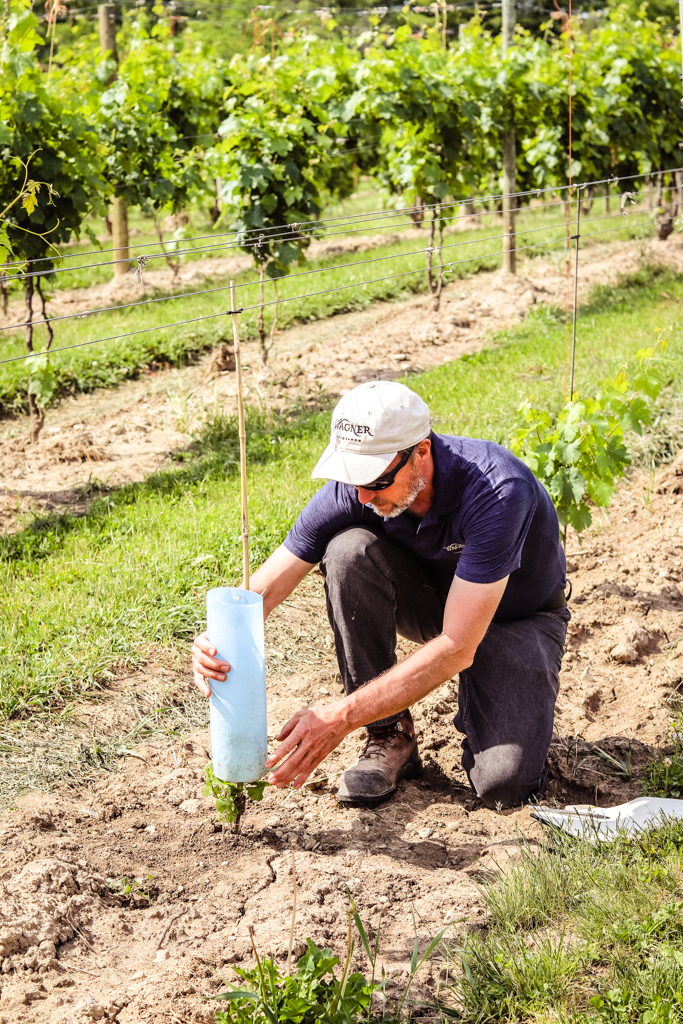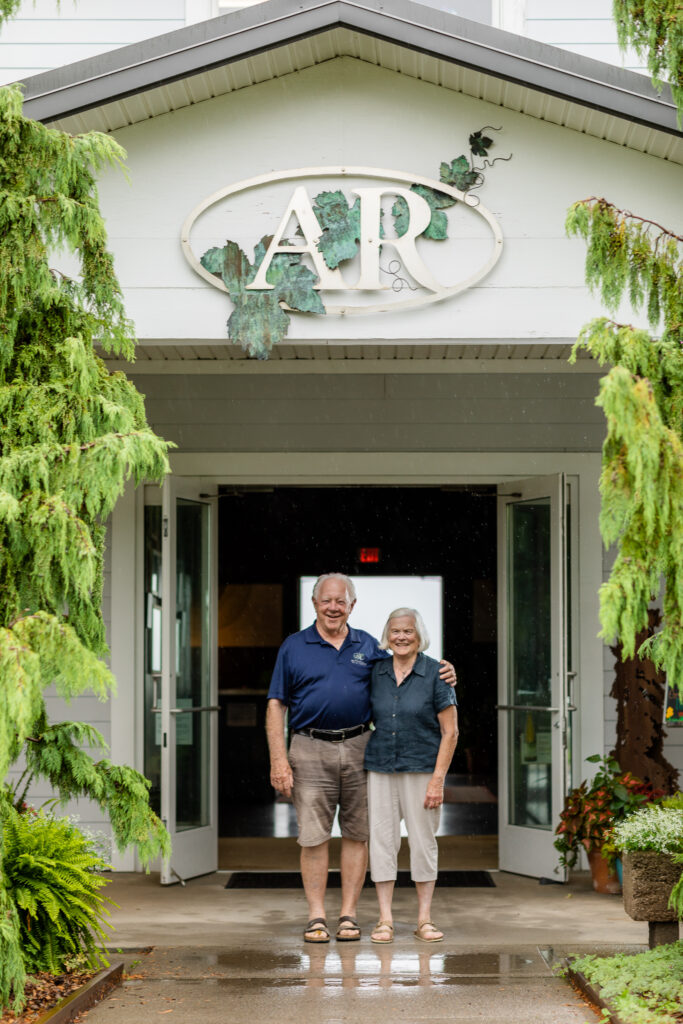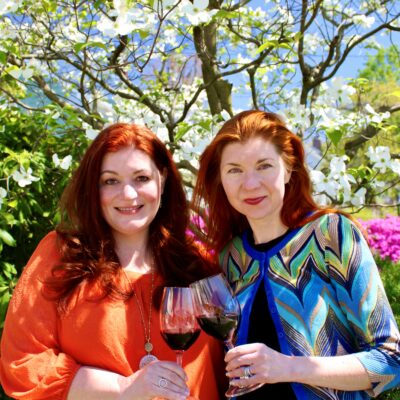Sustainability is more than a buzzword for the vintners of New York State. Although there is no legally binding definition of “sustainability,” for the purposes of the New York Sustainable Winegrowing program, sustainable farming entails not just the way a vineyard is farmed, but a system of farming that can be maintained and supported over time. In a vineyard where the same soil nourishes plants year after year, environmental sustainability is imperative.
Earlier this year, New York implemented this program which includes an official certification process for vineyards who are seeking to advance their environmental, social, and economic sustainability. Vineyard managers that choose to embrace the program are guided by the VineBalance workbook that includes sustainable standards as well as guidance on how to put them into practice and earn certification and have the option to put a Trustmark logo on their wines.
The benefits of the new program in vineyards are not yet measurable, but many of New York’s wineries aren’t starting from scratch. A sustainability movement has grown for decades in the state, and the wineries that have joined it—who have also chosen to continue to improve by joining the new certification program—can attest to the improved vineyard health and grape quality that result from being good stewards of the land.
The Pendulum Was Already Swinging

On Seneca Lake, Wagner Vineyards grows grapes on the same land the family has owned for more than 100 years. Wagner took part in the pilot group for the new sustainability program, helping to formalize the VineBalance workbook.
“I don’t know that we are going to be the stereotypical winery that has done the program,” says Wagner. “We have felt that we’ve been sustainable for 50 years, but there was no recognized program that really checked.”
He’s seen the region attempt to get a sustainable, third-party certification off the ground for a few decades now and is glad that the process is now in place. He’s certainly seen the benefits at Wagner’s vineyards.
“When I was kid I grew up discing the vineyards,” Wagner says, referring to the practice of keeping the soil between the vines free of vegetation. “We did multiple passes of cultivation to control weeds. It looked nice because you didn’t have a lot of weeds in the vineyards, but it did make it susceptible to erosion.”
But, he notes that before they were part of the official sustainability program, the pendulum swung completely the other way in their estate vineyards.
“We have permanent sod between our rows in all of our vinifera vineyards,” he says. They also drill in various cover crops in the vineyards that achieve goals such as fixing the nitrogen in the soil or creating organic matter.
But there’s always more that can be done, and the winery is implementing new practices, too. One of those practices is to ramp up soil testing so they can be strategic where they need to make soil amendments rather than doing blanket amendments across an entire vineyard.
“We are moving toward precision agriculture,” he says. Part of that includes having an onboard yield tester so they can measure as they harvest. That data is then used to determine precision applications, saving them from adding unnecessary amendments to the soils.
Signs of Regeneration
“This year we did not put out any real bird control because we have an eagle living down the hill,’ says John Martini, president of Anthony Road Wine Company on Seneca Lake.

Regenerative practices created conditions in the vineyards and the surrounding area that made a hospitable environment for an eagle to make its home. Those practices built the soils and the biodiversity back up after decades of detrimental use of DDT and other harmful chemicals used in the mid-1900s that ultimately didn’t work for long and made people sick.
“Now we think about all the balance of life. We need eagles to eat those evil little robin’s eggs. Robins are the worst,” says Martini. The birds eat entire grapes and what they don’t eat, they often puncture with their feet as they stand on them to steady themselves.
He sees the VineBalance workbook as a way to make it easier for people to “do the right thing” (which he acknowledges is constantly changing).
“Here’s some support that can help move this sustainable, regenerative, whatever you want to call it needle to the benefit of the grower,” he says. “And the consumer community is starting to appreciate it.”
After decades of improving the sustainability of Anthony Road’s vineyards, Martini sees a benefit that goes beyond healthier soils and biodiversity.
“I’m going to say, yeah, we’re growing better grapes,” he says. Why? One reason is using canopy management techniques to mitigate disease pressures rather than using chemical sprays. “We’ve deleafed everything in the fruiting zone and the fruit coming in is beautiful. The grapes are getting better now and the winemaker has more options.”
Good Land Stewardship Makes Good Neighbors
At Heart and Hands Wine Company on Cayuga Lake, co-owner and winegrower Tom Higgins believes 80 to 90 percent of the work to make a wine is done in the vineyard. The winery’s vineyards were planted in 2010 and sustainability has been a focus since the beginning.
“One of the main tenets that we believe in is stewardship. Through numerous readings, we found the use of herbicides, especially glyphosate, impacted the vines. They actually took glyphosate up through the plant.”
Higgins discovered that fermentation did not burn off that chemical and wines made from grapes grown with glyphosate contained its residue. From the winery’s inception, they refused to use any herbicides and also refrained from using insecticides.
Now, he’s looking to the VineBalance workbook to continue to improve.
“Just going through that workbook on an annual basis and saying, ‘What can we do that’s better than last year?’ while not having a bottom line cost structure out of line with what we can afford to do,” says Higgins, is one way they’ll continue to improve.
There’s a social component to sustainability, too, he believes.
“We have neighbors that border our property. Their houses are probably 100 feet away from our vineyard so we recognize the social element,” he says. “One of our neighbors has a 6-year-old and an 8-year-old running around. We understand our social impact from the physical nature of what we’re doing on the property.”
Rather than spray plumes of materials into the air that could potentially drift to the neighbors, they invested in a Lipco tunnel sprayer that goes over the rows and doesn’t allow spray to pass beyond them. The tunnels collect the spray material that doesn’t hit the vine and it goes back into a collection basin.
“You don’t lose any spray material to the atmosphere. It just gets collected and recirculated,” says Higgins. Eventually, Higgins will recoup the price of the tunnel sprayer by the money saved in lost spray material.
Like Wagner, Higgins has seen a positive natural effect from sustainable practices in the form of not an eagle, but an enormous amount of arachnids. They would not exist in the numbers they do if insecticides were used.
“I can only speculate that they are doing their job,” he says. He does not see mites, leafhoppers, and other bugs impacting the canopy and the fruit.
“The spiders are maintaining the balance,” believes Higgins.
And balance is where it’s at when it comes to sustainability. Winegrowers need to be able to use the land to grow grapes and balance what that process takes from the land with what they’re putting back into it. The New York Sustainable Winegrowing program will guide other establishments to do what wineries such as Wagner, Anthony Road, and Heart and Hands are already doing.

